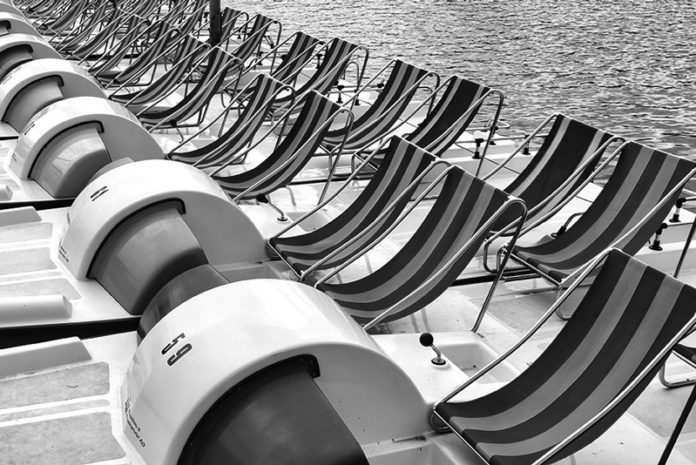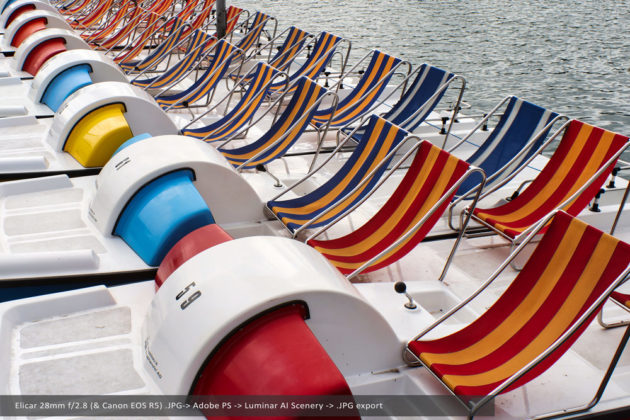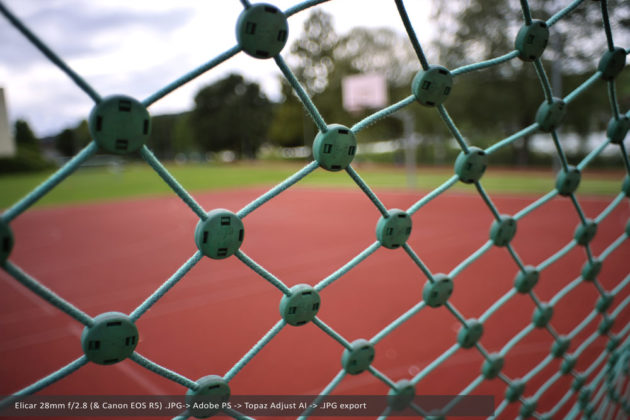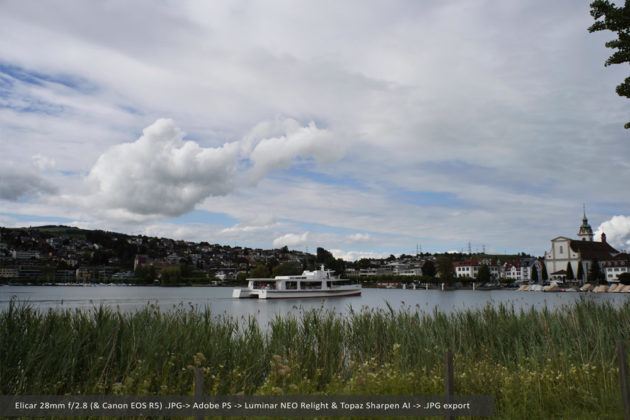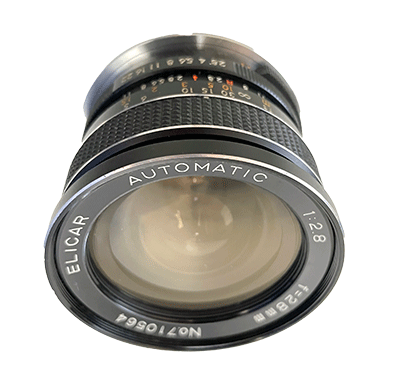Lens overview
The Elicar 28 mm f/2.8 Automatic is a third‑party full‑frame wide‑angle prime sold in the late 1970s–1980s under the Elicar house brand (distributed by Jaca Corporation and others). Most copies are labeled “Made in Japan,” but the exact OEM varies across batches (period sources and user communities point to several Japanese makers). You’ll find it in many mounts—M42, Canon FD, Pentax K, Nikon F (often Non‑AI), Olympus OM, Minolta SR/MD, Konica AR, Contax/Yashica—with broadly similar mechanics and cosmetics. Typical specs: 0.40 m minimum focus, 6‑blade diaphragm, 62 mm filter thread, and ~260–280 g weight. Dimensions and some details differ slightly by mount.
Manufacturing & branding. Elicar was a marketing brand run by Jaca Corporation (closely associated with Panagor). Elicar lenses were made in Japan by several OEMs, most notably Kino Precision (Kiron) and Komine; later production is linked to Tapak. The same optical/mechanical designs were often re-branded for distributors like Hanimex (and others), so you’ll see minor cosmetic/mechanical differences across copies while the core optics remain similar.
Pricing (now). This is a budget vintage wide: recent sales and dealer listings cluster roughly US $30–70 / €20–60, with outliers depending on mount/condition.
Build and ergonomics
A compact, all‑metal barrel with a smooth focus throw and positive aperture clicks. Most copies include A/M (auto/manual) switch on M42 variants; bayonet versions (FD, K, OM, MD, etc.) use the camera’s auto‑diaphragm linkages. The front doesn’t rotate, and the standard 62 mm filter size keeps accessories simple. Weight and size vary by mount—~257–282 g and ≈48–65 mm long are typical.
Optical performance
- Sharpness — Usable in the center at f/2.8 but clearly better by f/5.6, with most uniformity at f/8. Corners lag at maximum aperture; field curvature is present on some samples.
- Color & contrast — Neutral‑leaning color; moderate global contrast, wide open that improves when stopped down. Sample quality (haze, decentering) matters on budget copies.
- Bokeh & rendering — At 28 mm, bokeh isn’t the draw, but near MFD (0.40 m), you can get pleasant background blur; 6 blades yield hexagonal highlights when stopped down.
- Flare & CA — Veiling flare and purple/green fringing can appear with strong backlight at f/2.8–4; a hood helps. (Coatings and copy condition vary.)
- Distortion & vignetting — Expect mild barrel distortion and noticeable vignetting at f/2.8 that eases by f/5.6–8—typical of 1970s/80s compact 28s. (No single factory spec; this is observed behavior across period tests and user reports.)
Digital adaptation
Because the Elicar 28/2.8 came in many SLR mounts, adaptation depends on your copy:
- Mirrorless (RF/Z/E/L/X) — All versions adapt easily with simple, glass‑less rings and keep infinity focus. Set IBIS = 28 mm.
- FD → mirrorless: straightforward; use an FD‑to‑mirrorless adapter.
- Canon EF DSLRs —
- M42 → EF: easy (glass‑less) and maintains infinity. The lens evaluated is a M42 variant.
- Pentax K / Minolta SR / Canon FD / Konica AR → EF: require optical‑element adapters (quality loss) or a permanent conversion, so they’re not recommended unless you convert.
- Nikon F bodies — If your copy is a Non‑AI Nikon F, confirm body compatibility; older Non‑AI lenses can damage some AI‑only DSLR prisms/aperture tabs. On Nikon Z, use a simple F‑to‑Z ring and you’re fine. (General flange‑distance constraints explained in the linked references).
Historical and collector context
Elicar sold a complete line of primes and zooms in the manual‑focus era, many of which were OEM‑made in Japan and also seen under other brand names. The 28/2.8 sat as a value wide below OEM glass; today it’s a low‑risk buy for experimentation or travel kits where size and price trump perfection.
Impressions
Treat the lens as a compact travel‑wide that rewards f/5.6–8. Keep critical detail away from the extreme corners at f/2.8–4, and use a hood in complex light. If you shoot multiple mounts, M42 or Nikon F copies are the most adaptable across systems; FD/K/MD are best reserved for mirrorless.
Sample photos
Verdict — Pros and Cons
Pros
- Small; 62 mm filters; 0.40 m MFD
- Very affordable; plentiful in many mounts
- Easy mirrorless adaptation from any mount; M42→EF adapting is also simple
- Fun to play with!
Cons
- Soft corners wide open; best from f/5.6–8
- Flare & CA in hard light; hood advised
- Mixed OEM provenance → sample variation; specs differ slightly (min aperture f/16 vs f/22 on some copies)


